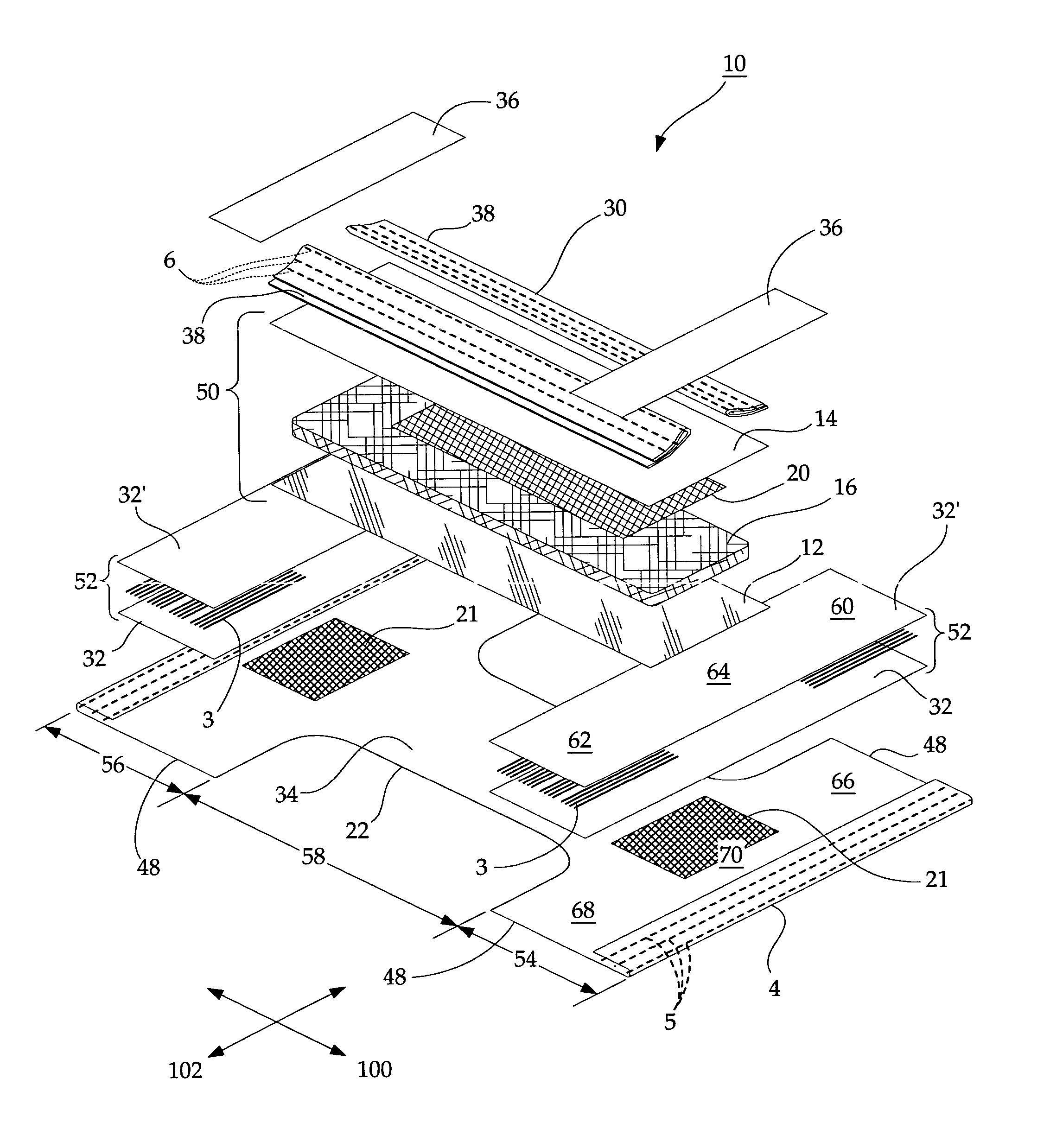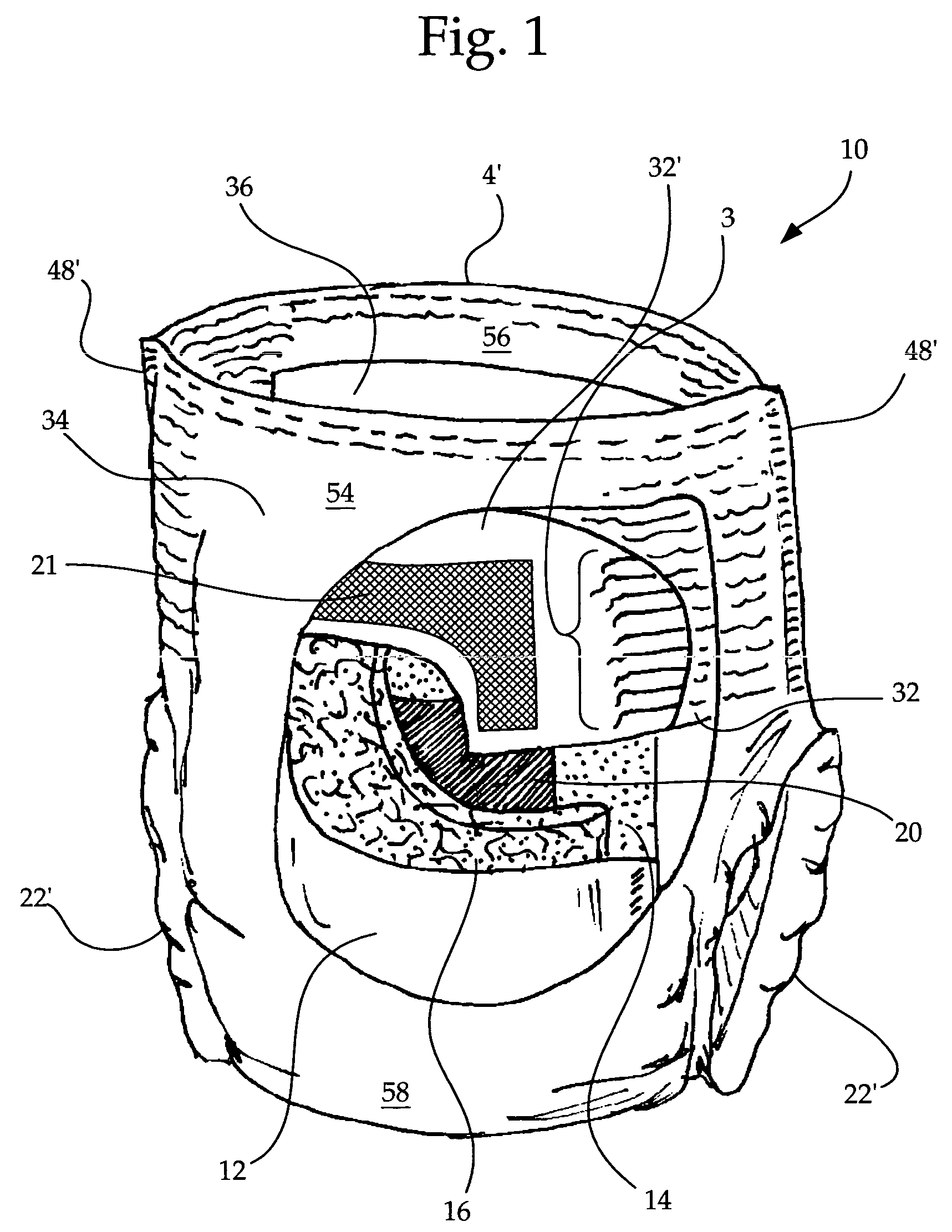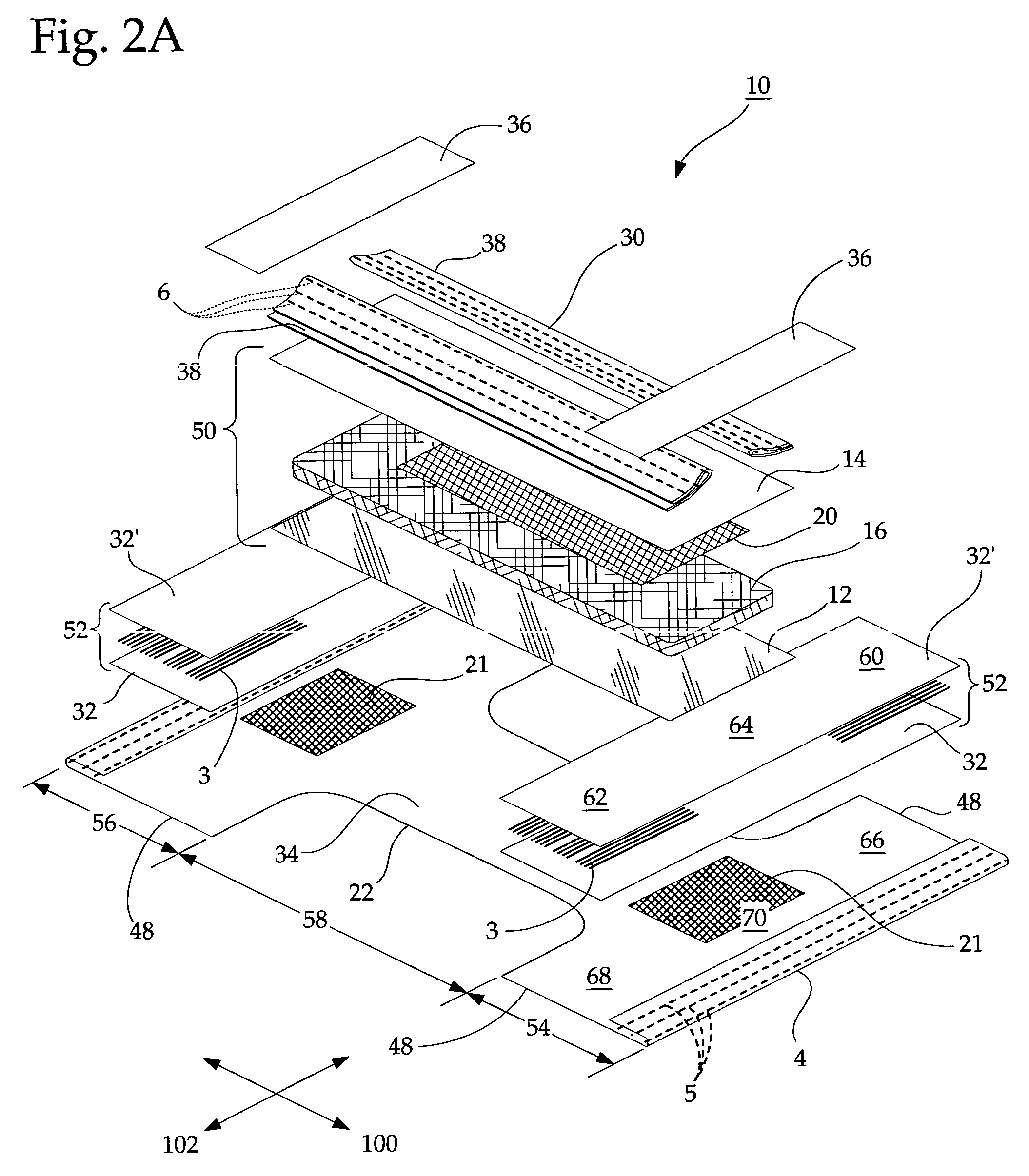Cloth-like laminate and absorbent garment
a cloth-like laminate and cloth-like technology, applied in the field of cloth-like laminates and absorbent garments, can solve the problems of garments being less comfortable for wearers, elements may not be uniformly coated, and undesirable consequences
- Summary
- Abstract
- Description
- Claims
- Application Information
AI Technical Summary
Benefits of technology
Problems solved by technology
Method used
Image
Examples
example 1
[0128]A test garment was constructed according to methods described herein and compared with a conventional garment to determine their relative comfort and cost. Both the test garment and the conventional garment were constructed to be substantially similar to the embodiment disclosed in FIGS. 1 and 2A, and each had stomach elastics 3, waist elastics 5, and gather elastics 6.
[0129]The stomach elastic assemblies 52 of the conventional garment each comprised sixteen stomach elastics 3, each made from a 610 denier (680 decitex) Lycra™ XA™ spandex elastic strand (available from E.I. DuPont de Nemours and Co., of Wilmington, Del.) that were disposed between first and second carrier layers 32, 32′ to be substantially parallel to the lateral direction 102 of the garment 10 and substantially evenly spaced from one another. The total distance between the stomach elastics 3 was approximately 99 mm in the longitudinal direction 100. The carrier layers 32, 32′ each comprised a sheet of Polybond...
example 2
[0141]A second test garment was constructed according to a preferred embodiment of the present invention and evaluated to determine the overall amount of adhesive required to manufacture the garment. The second test garment is substantially similar to the embodiment disclosed in FIGS. 1 and 2A and similar to the “present invention” garment described in Table 1.
[0142]The stomach elastic assemblies 52 of the conventional garment each comprised 49 stomach elastics 3, each made from a 220 decitex Lycra™ XA™ spandex elastic strand (available under vendor code T262P from E.I. DuPont de Nemours and Co., of Wilmington, Del.) that were disposed between first and second carrier layers 32, 32′ to be substantially parallel to the lateral direction 102 of the garment 10 and substantially evenly spaced from one another. The garment had one elastic assembly 52 in each waist region 54, 56, as shown in FIG. 2, yielding a total of 98 stomach elastics 3 between the two elastic assemblies 52 (note that...
PUM
| Property | Measurement | Unit |
|---|---|---|
| Thickness | aaaaa | aaaaa |
| Thickness | aaaaa | aaaaa |
| Mass | aaaaa | aaaaa |
Abstract
Description
Claims
Application Information
 Login to View More
Login to View More - R&D
- Intellectual Property
- Life Sciences
- Materials
- Tech Scout
- Unparalleled Data Quality
- Higher Quality Content
- 60% Fewer Hallucinations
Browse by: Latest US Patents, China's latest patents, Technical Efficacy Thesaurus, Application Domain, Technology Topic, Popular Technical Reports.
© 2025 PatSnap. All rights reserved.Legal|Privacy policy|Modern Slavery Act Transparency Statement|Sitemap|About US| Contact US: help@patsnap.com



